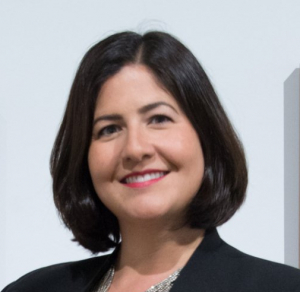Thinking Beyond The Gift Pyramid: A case study for a campaign’s public phase

When the Oakland Museum of California (OMCA) began planning for the public phase of an $85 million comprehensive campaign, Rehana Abbas, chief philanthropy officer, knew it was not going to be a traditional launch. Most museums are closing in on their goals by the time a campaign goes public. Abbas knew that would not be true for her organization.
“Unlike many museums, our board is not only about fundraising,” Abbas said. “Our trustees are generous, but giving capacity is not the top consideration for joining the board. We knew we had to have a much more robust public phase and that we had to do things differently to engage our diverse community.”
OMCA opened its doors in 1969, bringing together art, history, and natural sciences, in order to explore California’s unique character, landscape, waves of migration, and culture of innovation. The museum, Abbas suggested, was at the forefront of the national movement to make museums more equitable gathering spaces where all people feel like they belong. As part of the Museum’s campaign, OMCA is renovating its seven-acre campus to create a Museum, Garden, and Gathering Place for all community members to feel welcome.
“All In! The Campaign for OMCA” sought to raise $85 million over five years: $30 million cumulative for annual operating support which has grown year over year during the five-year campaign, $40 million to build long-term funds for financial sustainability and $15 million to transform the campus.
Building the base authentically
Knowing that the board would provide 25% of the funding, Abbas and her colleagues focused on engaging supporters at all levels, and built the membership base from 7,000 to 12,000 (pre-COVID). Significant gains in membership were made through such dynamic exhibitions as No Spectators: The Art of Burning Man and All Power to the People: Black Panthers at 50. “It’s in our DNA to engage people in respectful dialogue around important issues,” Abbas explained. “We offer lots of interactive opportunities to make that happen.”
Recognizing planned gifts in real-time
Abbas said OMCA also decided that they would recognize estate intentions at face value if people let the museum know it was in their estate plans. “This motivated donors to disclose their estate plans, and allowed us to show our appreciation long before we received their planned gift,” she said.
Aligning philanthropy with values of the museum
OMCA leaders also worked hard to align philanthropy with the values of the museum. “Our development language was too transactional and inaccessible,” Abbas said. “We wanted the donor and member experience to match the museum experience.” To that end, they made shifts to communications to focus more on philanthropy, the act of giving at any level, and less on transactional benefits and exclusivity. Donor events became platforms for supporters to connect with community partners who were engaged in exhibition development. “We try to center the voices of our community partners and artists in donor engagement.”
OMCA also wanted the donor experience to be accessible, so she and her team changed up the online giving platform. “Accessibility is at the center of what we do, so if our donation mechanisms and language aren’t accessible, that’s just not going to reflect who we are and want to be.”
Raising money outside the box
OMCA is fortunate to have the Oakland Museum Women’s Board, a separate 501(c)3 that donates exclusively to the museum. Annually, the group of dedicated volunteers holds a “White Elephant Sale” in a 96,000 square foot warehouse that is owned by the Women’s Board. After a preview weekend in January, the sale then opens to a wider public for a month. “It is wild,” said Abbas. “They have everything from bric-a-brac and buttons, to furs and wedding dresses, to Frank Gehry designed furniture.” The Women’s Board raises over $2 million annually in their sale, and have contributed $8 million to OMCA’s “All In!” Campaign. (In Spring 2021, the sale will be held online due to COVID).
Lessons learned
Most giving to the campaign has been unrestricted, which is a testament to the trust the community has in the museum and its leadership, especially Executive Director Lori Fogarty, Abbas said. “We’re telling a fuller story about what the museum is to the community and how it can foster social cohesion. People really responded to that message.”
With just a few months left in the campaign, which is slated to end June 30, 2021, Abbas said they are very much on track. OMCA saw an outpouring of generosity from loyal supporters when COVID forced the museum to close (closed since March 2020, it has not yet reopened). “We have less than $1 million to go and through customized outreach and direct mail, I am confident that we’re going to make it.”
To learn more, visit https://50.museumca.org/
Read more about CFA’s approach to Strategic Planning or contact us to discuss your initiative.

Rehana Abbas Oakland Museum of California
Rehana is the chief philanthropy officer for the Oakland Museum of California
